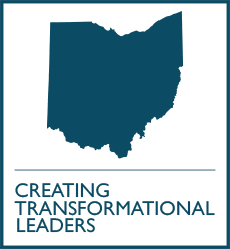Jan 18

President Gershen discusses the future of education and health care on the Sullivan Alliance blog
As published on The Sullivan Alliance Leadership Blog:
What Remains for the Least of Us…
By Jay A. Gershen, D.D.S., Ph.D., president of Northeast Ohio Medical University
About a year ago, Northeast Ohio Medical University and 13 other public universities, collectively called the Inter-University Council of Ohio(IUC), launched a public education campaign to promote the value of a university degree. We began by writing letters, op-eds, blogs, etc., reflecting on our shared sense of urgency as educators that Ohio faces a severe talent gap, which threatens our continued economic competitiveness and growth.
It has been well documented that earning a bachelor’s degree leads to healthier, more engaged and employable citizens. A typical college graduate of a four-year college or university is not only more likely to be employed but also earns nearly $1 million more than a high school graduate over his or her career. That graduate also lives seven years longer on average.
Increasing the number of college graduates will lead to enhanced lives, economic growth and better communities in our region, state and nation.
Many college graduates also pursue graduate and professional degrees such as those that Northeast Ohio Medical University offers in health care. As health care professionals, these graduates earn even more, and contribute billions of dollars to the Ohio economy and beyond.
Paving a pathway to education.
Analysts predict that by 2025, 65 percent of working-age adults in Ohio will need a postsecondary degree to meet the workforce needs of the state’s employers.
Unfortunately, at the current rate, only 43 percent of working-age Ohioans will attain the needed degree by 2025―a gap of 1.7 million.
Over the past five years, our 14 public universities in Ohio have been working together to proactively address this issue by adopting numerous measures to reduce student debt and making a quality education affordable while increasing bachelor’s degree completion and connecting those graduates to successful careers. We implemented several other recommendations from the state including reducing the cost of earning a bachelor’s degree by 5 percent and endorsing the most comprehensive accountability funding formula for public universities in the country.
These initiatives proved effective: The number of postsecondary degrees awarded by Ohio’s public universities and community colleges increased by 20 percent between 2010 and 2015.
Though funding-per-college-student in Ohio remained 27 percent below the national average and need-based financial aid, which specifically targets the most at-risk students, remained below pre-recession levels, we remained hopeful as our goals were simple and our gains beyond debate.
New Challenges.
One year later, the recently signed Tax Cuts and Jobs Act, H.R. 1 has presented us with the unimaginable: We thought we’d be continuing our efforts to improve college access and affordability and protect the advancements already achieved. Instead we are facing a reduction in benefits for those students. Our uphill battle might go downhill, as several changes may have a negative impact on higher education.
Cuts to higher education also threaten the advancements made to transform health care. NEOMED’s Education for Service initiatives in particular seek to address the academic, social and financial barriers on the pathway to practice. As we also work to meet the needs of the underserved in health care by developing professionals who come from medically underserved areas, as well as those who want to serve in those areas (even if they don’t hail from them), we depend heavily on individual donations and endowments to sustain our efforts.
The bill’s expansion of the standard deduction reduces the ability of individuals to itemize their charitable deductions, a major source of endowment funds. Those funds provide many critical resources for students including scholarships.
The Tax Cuts and Jobs Act may well have the counterproductive consequence of generating revenue for some in the country today, at the expense of the lifetime earning potential of many individuals, and dare I say, the life expectancy of those already in need.
It doesn’t make sense … for any of us.
Any college or university administrator, in Ohio or throughout the nation, will tell you that increasing the tax burden on students and their families will discourage many potential students from pursuing a higher education. Any employer knows that without those highly educated workers to fill jobs, the country’s economic growth will be severely constrained. These cuts may actually weaken the long-term tax base of the nation’s economy, not strengthen it.
We hope that these changes will not remain.
It seems that failing to meet the needs of the underserved will remain one of our nation’s greatest tragedies. Much in this bill addresses those who already have the most.
One can only wonder: What remains for those who have the least?

